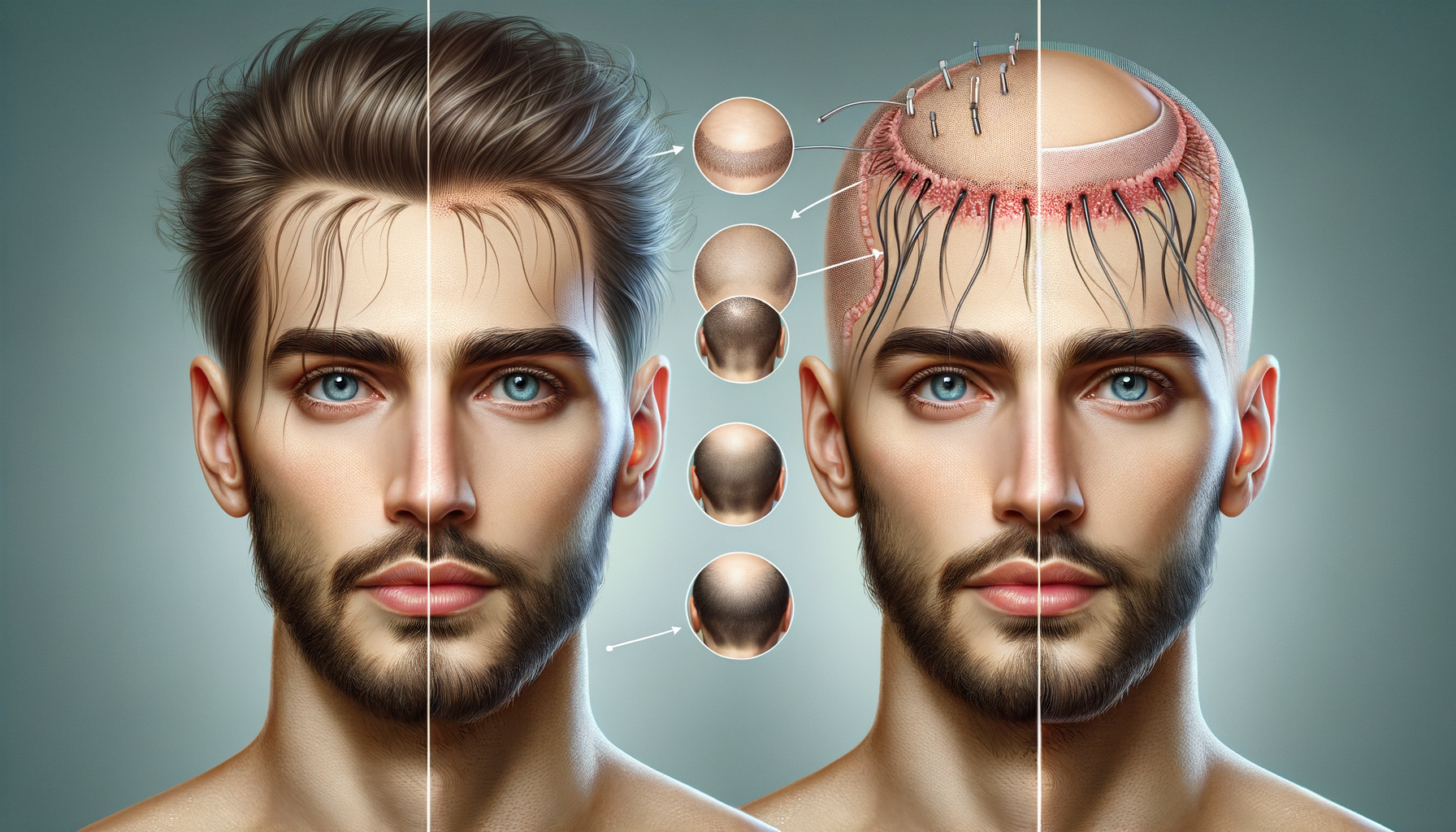Understanding Hair Transplantation
Hair transplantation is a surgical procedure that involves moving hair follicles from one part of the body, known as the donor site, to a bald or balding part of the body, known as the recipient site. It is primarily used to treat male pattern baldness, but it can also be beneficial for women experiencing hair thinning. The procedure is minimally invasive and has become increasingly popular due to its effectiveness and the natural look it provides.
The two most common techniques for hair transplantation are Follicular Unit Transplantation (FUT) and Follicular Unit Extraction (FUE). FUT involves removing a strip of skin with hair follicles from the donor site and then dissecting it into individual follicular units. These units are then transplanted to the recipient area. FUE, on the other hand, involves extracting individual hair follicles directly from the donor area and transplanting them to the recipient site. Each method has its pros and cons, and the choice often depends on the patient’s specific needs and the surgeon’s recommendation.
Hair transplantation is not only about aesthetics; it can significantly boost a person’s self-esteem and confidence. Many individuals who undergo the procedure report a renewed sense of self and improved social interactions. However, it is essential to have realistic expectations and understand that the results can vary based on several factors, including the extent of hair loss and the quality of the donor hair.
Procedure and Techniques
The hair transplant procedure typically begins with a thorough consultation where the surgeon assesses the patient’s hair loss pattern, the density of the donor hair, and the patient’s expectations. This step is crucial as it helps in planning the most effective approach for the transplant. Once the plan is set, the actual procedure can take several hours, depending on the number of grafts required.
During the surgery, local anesthesia is applied to ensure the patient is comfortable. In the FUT method, a strip of scalp is removed, and the area is sutured. The strip is then dissected into individual follicular units under a microscope. In the FUE method, each follicular unit is extracted individually using a small punch tool. This method is less invasive and leaves minimal scarring, making it a popular choice among patients.
Once the follicles are ready, the surgeon makes tiny incisions in the recipient area and places the grafts carefully to mimic natural hair growth patterns. This meticulous process requires a skilled hand and an artistic eye to ensure the results are as natural-looking as possible. Post-surgery, patients are given specific instructions on how to care for their scalp to promote healing and optimize the results.
Recovery and Aftercare
Recovery from a hair transplant procedure can vary depending on the technique used. Generally, patients can expect some swelling and discomfort in the first few days following the surgery. It’s common for scabs to form around the transplanted hair follicles, but these typically fall off within a week or two.
Patients are usually advised to avoid strenuous activities and direct sunlight exposure for a few weeks to protect the healing scalp. It’s also crucial to follow the surgeon’s aftercare instructions, which may include using prescribed medications to prevent infection and reduce swelling.
Hair growth from the transplanted follicles usually begins within three to four months, with significant improvements visible after six to nine months. It’s important to note that the transplanted hair may initially fall out before new growth begins, a normal part of the process known as “shock loss.” Patience is key, as full results can take up to a year to manifest.
Benefits and Considerations
Hair transplantation offers several benefits, making it a compelling option for those struggling with hair loss. One of the primary advantages is the natural appearance of the results. Since the patient’s own hair is used, the texture and color match perfectly, creating a seamless look.
Another benefit is the permanence of the results. Unlike other hair restoration methods, such as topical treatments or wigs, hair transplants provide a long-lasting solution. Once the transplanted hair follicles take root, they continue to grow naturally for a lifetime.
However, there are considerations to keep in mind. The cost of hair transplantation can be significant, and it’s important to weigh this against the potential benefits. Additionally, not everyone is an ideal candidate for the procedure. Factors such as the extent of hair loss, the availability of donor hair, and underlying health conditions can affect the outcome. Consulting with a qualified specialist is essential to determine if hair transplantation is the right choice.
Alternatives to Hair Transplantation
While hair transplantation is an effective solution for many, it is not the only option available for addressing hair loss. Non-surgical alternatives can also be considered, depending on the individual’s preferences and the severity of hair loss.
One popular non-surgical method is the use of topical treatments that stimulate hair growth. These products are easily accessible and can be applied at home, offering a convenient option for those who prefer a less invasive approach. However, results can vary, and consistency is key to achieving noticeable improvements.
Another alternative is low-level laser therapy (LLLT), a non-invasive treatment that uses laser light to stimulate hair follicles and promote growth. LLLT devices are available for home use, making them a flexible option for many individuals. While some users report positive results, it’s important to consult with a healthcare professional to ensure it’s suitable for your specific condition.
For those who prefer a more aesthetic approach, wigs and hairpieces offer an immediate solution to hair loss. Modern advancements have made these options more natural-looking and comfortable, providing a quick fix for those seeking an immediate change in appearance.




Leave a Reply